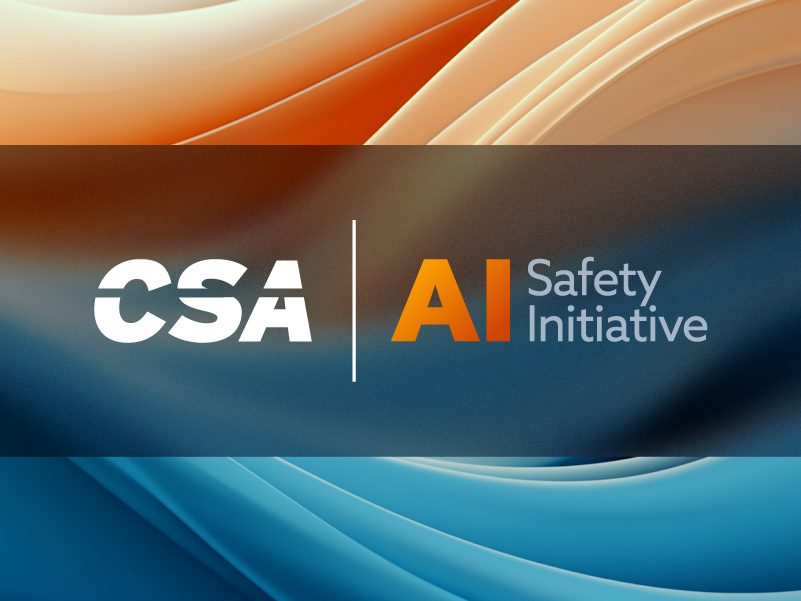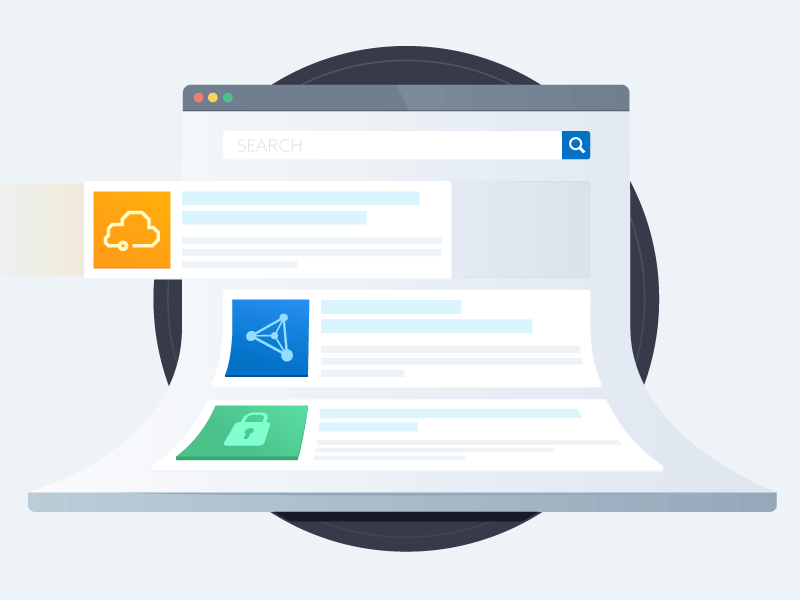Oracle Cloud Infrastructure Breach: Mitigating Future Attacks with Agentic AI
Published 04/18/2025
Written by Ken Huang, CSA Fellow, Co-Chair of CSA AI Safety Working Groups.
The cybersecurity community has been rocked by a significant breach of Oracle Cloud Infrastructure (OCI), specifically targeting its Identity Manager systems. This incident provides critical lessons for organizations relying on cloud infrastructure. In this analysis, I'll break down the technical details of what happened and propose potential mitigation strategies powered by Agentic AI security techniques.
Understanding the Oracle Cloud Infrastructure Breach
Anatomy of the Attack
In early 2025, Oracle experienced what would become one of the year's most significant cloud security incidents. The attack specifically targeted Oracle's Cloud Identity Manager (IDM) systems, which are responsible for authentication and access management across Oracle's cloud ecosystem.
The breach unfolded as follows:
Initial Compromise
Attackers exploited CVE-2021-35587, a Java vulnerability in Oracle Fusion Middleware dating back to 2020. Despite being a known vulnerability, it remained unpatched in Oracle's legacy Gen 1 servers (also known as Oracle Cloud Classic). These servers, while officially deprecated and last actively used in 2017, remained operational as part of Oracle's infrastructure.
The initial entry point was through the endpoint login.(region-name).oraclecloud.com, which hosted sensitive credentials for Single Sign-On (SSO) and Lightweight Directory Access Protocol (LDAP) services. This strategic target gave attackers access to authentication systems that would later facilitate broader access.
Timeline and Detection
The breach timeline reveals concerning gaps in detection capabilities:
- January 2025: Initial system infiltration
- January-February 2025: Attackers maintained persistent access for approximately two months
- Late February 2025: Initial detection of suspicious activity
- Early March 2025: Oracle initiated an internal investigation after receiving a ransom demand
- March 20, 2025: Stolen data appeared for sale on BreachForums by a threat actor using the handle "rose87168"
Data Exfiltration and Impact
The scale of the breach was substantial:
- Approximately 6 million records were stolen
- The compromised data included:
- Usernames, email addresses, and hashed passwords
- Encrypted SSO and LDAP credentials
- Java Key Store (JKS) files
- Enterprise Manager JPS keys
- Over 140,000 Oracle cloud tenants were potentially affected
- The stolen data dated back at least 16 months
Technical Vulnerabilities Exploited
The breach succeeded due to multiple factors:
- The exploited Java vulnerability allowed unauthenticated attackers network access via HTTP
- This access led to complete compromise of Oracle Access Manager
- Poor patch management and outdated configurations on legacy systems
- Inadequate monitoring of authentication infrastructure
- Insufficient isolation between legacy and modern cloud systems
Oracle's Response
Oracle has taken several actions since discovering the breach:
- Acknowledged the breach to affected customers (though notably not via public disclosure initially)
- Engaged CrowdStrike for forensic investigation
- Cooperated with FBI investigations
- Implemented security enhancements for legacy systems
- Reassured stakeholders that the primary Gen 2 cloud infrastructure remained secure
Future Potential Mitigations: Agentic AI-Powered Defense Strategies
The Oracle Cloud Infrastructure breach demonstrates some gaps in traditional security approaches. Here's how Agentic AI systems, capable of planning, reasoning, and tool use, can significantly enhance security posture across the entire lifecycle of an attack:
Core Principles of Agentic AI Security
- Proactive Planning: Agentic AI doesn't just react; it anticipates. It proactively plans security strategies based on risk assessments, threat intelligence, and simulated attack scenarios.
- Autonomous Reasoning: It analyzes complex situations, infers attacker intent, and makes decisions on the fly, adapting to evolving threats.
- Adaptive Tool Use: Agentic AI leverages a wide range of security tools (SIEMs, firewalls, EDR, etc.) and integrates them seamlessly, orchestrating coordinated responses without manual intervention.
- Continuous Learning: Agents constantly learn from past incidents, threat data, and system behavior, refining their strategies and improving detection accuracy over time.
1. Proactive Vulnerability Orchestration and Remediation Agent
Before the Breach (Prevention): An Agentic AI system continuously monitors the threat landscape, using reasoning to connect seemingly disparate vulnerabilities (like the CVE-2021-35587) with specific system configurations. It then formulates a remediation plan, using automation tools to orchestrate patching, configuration changes, or even temporary workarounds (e.g., firewall rules) before an exploit occurs. It should proactively identify systems like the Gen 1 servers and flag them for immediate remediation or isolation based on their inherent risk profile.
During the Breach (Detection and Containment): If a vulnerability is exploited, the Agent reasons about the potential impact based on the system's role and connectivity. It then uses its toolset to rapidly contain the breach: isolating affected systems, triggering multi-factor authentication (MFA) for all user accounts potentially affected, and alerting security teams with a prioritized assessment of the situation. It could even dynamically create and deploy intrusion detection signatures based on observed exploit behavior.
After the Breach (Remediation and Learning): The Agent analyzes the attack, identifies root causes, and updates its vulnerability models. It then formulates a plan to prevent similar attacks, which might involve policy changes, system hardening, or deployment of new security tools. It documents the entire incident, including the rationale behind its actions, providing valuable insights for future incidents and training data to imporve the Agent's performance.
# Pseudocode for Agentic AI-based Vulnerability Orchestration and Remediation
class VulnerabilityAgent:
def __init__(self):
self.knowledge_base = load_vulnerability_data() # CVEs, exploits, vendor advisories
self.attack_path_analyzer = AttackPathAnalyzer() # Simulates potential attack paths
self.remediation_planner = RemediationPlanner() # Generates remediation strategies
self.automation_engine = AutomationEngine() # Executes remediation steps
def analyze_vulnerability(self, vulnerability):
# Reasoning: Assess exploitability, impact, and context
risk_score = self.attack_path_analyzer.calculate_risk(vulnerability)
if risk_score > THRESHOLD:
# Planning: Generate a remediation plan
remediation_plan = self.remediation_planner.create_plan(vulnerability)
# Tool Use: Execute the plan using automation engine
self.automation_engine.execute(remediation_plan)
def learn_from_incident(self, incident):
# Post-incident analysis to improve future responses
updated_knowledge = self.analyze_incident(incident)
self.knowledge_base.update(updated_knowledge)
agent = VulnerabilityAgent()
agent.analyze_vulnerability(CVE_2021_35587) # Example invocation
2. Autonomous Threat Hunting and Intelligence Fusion Agent
Before the Breach (Proactive Discovery): This agent continuously scans dark web forums, threat intelligence feeds, and code repositories, looking for early indicators of planned attacks or leaked credentials related to the organization. It uses natural language processing (NLP) to understand attacker intent and reasoning to connect seemingly unrelated pieces of information.
During the Breach (Real-time Correlation): During a potential incident, the agent correlates external threat intelligence with internal telemetry data. For example, if the "rose87168" handle appears in internal logs accessing OCI resources, it can trigger an immediate investigation. This enables faster identification and response to active threats.
After the Breach (Attribution and Hardening): This agent analyzes the complete attack chain to determine the attacker's tactics, techniques, and procedures (TTPs). This information is used to update threat models, improve detection rules, and proactively harden systems against future attacks from the same or similar threat actors.
3. Adaptive Zero-Trust Enforcement Agent
Before the Breach (Dynamic Policy Generation): The agent analyzes user behavior, device posture, and application context to dynamically generate zero-trust policies. It moves beyond static rules to create context-aware access controls. For example, users accessing sensitive data from unmanaged devices might be required to undergo enhanced authentication or be restricted to read-only access.
During the Breach (Context-Aware Access Revocation): If suspicious activity is detected (e.g., anomalous access patterns), the agent can automatically revoke access to sensitive resources based on the context of the situation. It might temporarily disable accounts, require step-up authentication, or block access from specific geographic locations.
After the Breach (Policy Refinement): The agent analyzes the incident to identify weaknesses in existing zero-trust policies and automatically recommends adjustments. For example, if lateral movement was possible due to overly permissive network segmentation, the agent can suggest more granular micro-segmentation rules.
4. Autonomous Incident Response and Containment Agent
Before the Breach (Pre-incident Planning): This agent develops and maintains incident response playbooks for various types of attacks. It simulates different attack scenarios to identify potential gaps in response capabilities and recommend improvements.
During the Breach (Automated Containment and Remediation): Upon detection of a security incident, the agent uses its reasoning and planning capabilities to orchestrate a coordinated response. This might involve isolating affected systems, revoking compromised credentials, deploying security patches, and notifying relevant stakeholders. Critically, it documents all actions taken and the reasoning behind them, providing a clear audit trail for post-incident analysis.
After the Breach (Post-incident Analysis and Improvement): The agent analyzes the incident, identifies areas for improvement in incident response procedures, and updates playbooks accordingly. It generates reports for security teams, providing insights into the effectiveness of the response and recommendations for future improvements.
5. Agentic Management of Legacy System Risk
Before the Breach (Risk Assessment and Mitigation Planning): The Agent inventories all legacy systems, assesses their vulnerabilities and potential impact on the broader infrastructure. It creates mitigation plans, including isolation, enhanced monitoring, and compensating controls. It also proactively plans for the eventual retirement of these systems.
During the Breach (Enhanced Detection and Response): The agent applies specialized monitoring techniques to detect anomalies on legacy systems, even if they lack modern security features. It's programmed with knowledge of common legacy system vulnerabilities and can quickly identify and respond to attacks.
After the Breach (Migration Planning and Enforcement): The agent analyzes the incident to inform future migration strategies. It prioritizes the retirement of the most vulnerable legacy systems and enforces timelines for their decommissioning.
6. Agent-Driven Transparent Incident Disclosure Framework
Before the Breach (Preparation and Simulation): The Agent prepares communication templates, identifies key stakeholders, and simulates potential breach scenarios. This ensures a swift and accurate response when an actual incident occurs.
During the Breach (Automated Impact Assessment and Notification): The Agent automatically assesses the breach scope and impact, generating customized notifications for affected customers. These notifications provide clear and actionable information about the breach and steps customers can take to protect themselves.
After the Breach (Continuous Communication and Support): The agent continues to provide updates to customers and stakeholders throughout the remediation process. It uses NLP to answer customer questions and provide personalized support.
Final Thoughts
By implementing these Agentic AI-powered defense strategies, organizations can significantly improve their security posture. The key is to move beyond reactive measures and embrace proactive, intelligent, and autonomous security capabilities. The Oracle Cloud Infrastructure breach serves as a potent reminder that identity systems are the keys to the kingdom. Agentic AI offers the promise of better protection of that kingdom.
My upcoming Springer book, titled “Agentic AI: Theories and Practices”, to be published in August 2025, will feature a dedicated chapter on Agentic AI for Defensive Security, providing a deep dive into these concepts and practical strategies.
Some of these technologies exist today to implement these mitigations. More research and investment are needed to enhance these technologies with Agentic AI. Are your organizations ready? How is your organization approaching identity security in the cloud? Are you implementing any of these advanced mitigation strategies?
About the Author
Ken Huang is a prolific author and renowned expert in AI and Web3, with numerous published books spanning AI and Web3 business and technical guides and cutting-edge research. As Co-Chair of the AI Safety Working Groups at the Cloud Security Alliance, and Co-Chair of AI STR Working Group at World Digital Technology Academy under UN Framework, he's at the forefront of shaping AI governance and security standards.
Huang also serves as CEO and Chief AI Officer(CAIO) of DistributedApps.ai, specializing in Generative AI related training and consulting. His expertise is further showcased in his role as a core contributor to OWASP's Top 10 Risks for LLM Applications and his active involvement in the NIST Generative AI Public Working Group in the past.
Key Books
- “Agentic AI: Theories and Practices” (upcoming, Springer, August, 2025)
- "Beyond AI: ChatGPT, Web3, and the Business Landscape of Tomorrow" (Springer, 2023) - Strategic insights on AI and Web3's business impact.
- "Generative AI Security: Theories and Practices" (Springer, 2024) - A comprehensive guide on securing generative AI systems
- "Practical Guide for AI Engineers" (Volumes 1 and 2 by DistributedApps.ai, 2024) - Essential resources for AI and ML Engineers
- "The Handbook for Chief AI Officers: Leading the AI Revolution in Business" (DistributedApps.ai, 2024) - Practical guide for CAIO in small or big organizations.
- "Web3: Blockchain, the New Economy, and the Self-Sovereign Internet" (Cambridge University Press, 2024) - Examining the convergence of AI, blockchain, IoT, and emerging technologies
His co-authored book on "Blockchain and Web3: Building the Cryptocurrency, Privacy, and Security Foundations of the Metaverse" (Wiley, 2023) has been recognized as a must-read by TechTarget in both 2023 and 2024.
A globally sought-after speaker, Ken has presented at prestigious events including Davos WEF, ACM, IEEE, CSA AI Summit, IEEE, ACM, Depository Trust & Clearing Corporation, and World Bank conferences.
Ken Huang is a member of OpenAI Forum to help advance its mission to foster collaboration and discussion among domain experts and students regarding the development and implications of AI.
Related Resources



Unlock Cloud Security Insights
Subscribe to our newsletter for the latest expert trends and updates
Related Articles:
Implementing CCM: Threat & Vulnerability Management Controls
Published: 11/21/2025




.jpeg)
.jpeg)
